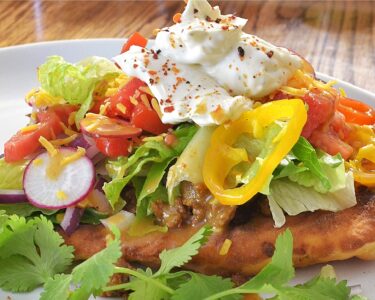Noodle tools are essential gadgets for any kitchen that aspires to create delicious, homemade pasta. Whether you’re a seasoned chef or an enthusiastic home cook, understanding the nuances of these tools can significantly enhance your cooking experience. Choosing the right noodle tools not only simplifies the pasta-making process but also ensures the consistency and quality of your noodles. In this ultimate guide, we’ll delve into various types of noodle tools, factors to consider when selecting them, and some top models available on the market. By the end, you’ll have a clearer idea of which tools best suit your culinary needs and preferences.
Types of Noodle Tools
When it comes to noodle tools, the variety available can be overwhelming. Here’s a breakdown of the key types to help you decide which are best suited for your kitchen:
Manual vs. Electric Noodle Makers
Manual Noodle Makers Manual noodle makers are favored for their simplicity and control. Typically, they consist of a hand-cranked machine where you feed dough through rollers and cutters. They are compact, often more affordable, and can be easily stored. However, they do require more physical effort and time to operate. For example, the Atlas 150 Pasta Machine is a popular choice among home cooks for its reliability and ease of use.
Electric Noodle Makers Electric noodle makers offer convenience with their motorized components. They automate the mixing, kneading, and extrusion processes, which saves time and effort. Models like the Philips Pasta Maker can produce fresh noodles in a fraction of the time required by manual machines. They are generally more expensive but ideal for those who frequently make large quantities of pasta or prefer a hands-off approach.
Essential Noodle Tools for Homemade Pasta
For making homemade pasta, several essential tools are indispensable:
- Rolling Pins: Ideal for flattening dough to the desired thickness. A marble rolling pin is preferred for its weight and even pressure.
- Pasta Cutters: Available in various shapes and sizes, including fettuccine, spaghetti, and pappardelle. The Kitchenaid Pasta Roller Attachment is a versatile option.
- Dough Scrapers: Useful for handling and dividing dough. The OXO Good Grips Dough Scraper is well-regarded for its ergonomic design.
These tools ensure that you can create a variety of pasta shapes and textures, enhancing your culinary repertoire.
Specialized Noodle Tools for Different Cuisines
Different cuisines require specific noodle tools to achieve authentic results. For instance:
- Ramen Noodle Press: Designed to create thin, springy ramen noodles, like the Shin Sen Gumi Ramen Maker.
- Udon Noodle Cutter: For cutting thick, chewy udon noodles, often used in Japanese cooking. The Japanese Udon Cutter is a specialized tool for this purpose.
- Soba Noodle Maker: Creates buckwheat soba noodles, essential for traditional Japanese dishes. The Soba Maker by Yukiwa is a popular choice.
Factors to Consider When Choosing Noodle Tools
Selecting the right noodle tools can be a nuanced process, influenced by several important factors. Here’s a guide to help you make an informed choice:
Material and Durability
The material of noodle tools greatly impacts their performance and longevity:
- Stainless Steel: Known for its durability and resistance to rust and staining. It’s a preferred material for high-quality pasta machines and cutters. For example, the Marcato Atlas 150 pasta machine features stainless steel rollers and cutters.
- Plastic: Lightweight and often more affordable, but can wear out more quickly and might not offer the same level of precision. The Pasta Maker by Imperia is an example of a reliable plastic option.
- Wood: Traditional and aesthetically pleasing, but requires proper maintenance to avoid warping. A wooden rolling pin is a classic choice for home cooks.
Durable materials ensure that your tools will last for years, even with frequent use.
Ease of Use and Maintenance
Comfort and ease of use are critical factors to consider:
- Ease of Use: Manual tools require physical effort and some practice to master. Electric tools simplify the process but may have a learning curve for setup and operation.
- Maintenance: Some tools are easier to clean than others. Stainless steel and plastic tools typically require less maintenance, while wooden tools need to be hand-washed and thoroughly dried to prevent damage.
For example, the KitchenAid Pasta Roller Attachment is praised for its ease of use and straightforward maintenance compared to manual machines.
Price and Budget Considerations
Noodle tools vary widely in price:
- Budget Options: Manual machines and basic cutters often cost less. The Imperial Pasta Machine offers good performance at a budget-friendly price.
- Mid-Range Options: Features more robust construction and additional functionalities. The Marcato Atlas 150 strikes a balance between quality and cost.
- High-End Options: Electric machines and high-quality models come with premium prices. The Philips Pasta Maker is a top choice for those willing to invest in a more advanced tool.
Top Noodle Tools on the Market
When selecting noodle tools, it’s helpful to compare various options to find the best fit for your needs. Here’s a look at some of the top models currently available:
Detailed Reviews of Popular Models
- Marcato Atlas 150 Pasta Machine
- Overview: The Marcato Atlas 150 is renowned for its robust construction and versatility. It features adjustable rollers for different pasta thicknesses and includes a pasta cutter for fettuccine and tagliatelle.
- Pros: Durable stainless steel, easy to clean, and versatile. It’s a favorite among home cooks for its reliability and consistent results.
- Cons: Requires manual operation, which may be strenuous for some users.
- Philips Pasta Maker HR2375/06
- Overview: This electric pasta maker automates the entire pasta-making process, from mixing and kneading to extruding the dough. It can make a variety of pasta shapes.
- Pros: Time-saving, minimal effort required, and consistent results. Ideal for those who make pasta frequently or in larger quantities.
- Cons: Higher price point and larger countertop footprint.
- Imperia Pasta Maker
- Overview: A budget-friendly option that still delivers solid performance. It features a metal body and adjustable rollers, with optional attachments for different pasta types.
- Pros: Affordable, sturdy, and versatile. Good for beginners or those looking for a reliable manual machine.
- Cons: Limited to manual operation and fewer built-in features compared to more expensive models.
- Kitchenaid Pasta Roller Attachment
- Overview: Designed to work with Kitchenaid stand mixers, this attachment rolls out dough and can be paired with various cutters for different pasta shapes.
- Pros: Convenient for Kitchenaid users, easy to use, and saves space as it attaches to existing kitchen equipment.
- Cons: Requires a Kitchenaid mixer, and the attachment itself can be pricey.
- Japanese Udon Cutter by Yukiwa
- Overview: A specialized tool for cutting thick udon noodles, essential for authentic Japanese cuisine.
- Pros: Perfectly cuts udon to the desired thickness, enhancing the authenticity of your dishes.
- Cons: Limited to udon noodles, so it may not be as versatile as other tools.
Pros and Cons Table
| Tool | Pros | Cons |
| Marcato Atlas 150 | Durable, versatile, easy to clean | Manual operation, can be strenuous |
| Philips Pasta Maker HR2375/06 | Time-saving, minimal effort, consistent results | Higher price, larger countertop footprint |
| Imperia Pasta Maker | Affordable, sturdy, versatile | Manual operation, fewer features |
| Kitchenaid Pasta Roller Attachment | Convenient for Kitchenaid users, space-saving | Requires Kitchenaid mixer, higher cost |
| Japanese Udon Cutter by Yukiwa | Perfect for udon, authentic results | Limited to udon noodles |
Case Studies and Real-Life Examples
Understanding how different noodle tools perform in real-life situations can offer valuable insights. Here’s a look at user experiences and expert opinions on some of the top noodle tools.
User Experiences and Recommendations
- Sarah L., Home Cook from Austin, TX
- Tool Used: Marcato Atlas 150
- Experience: “The Marcato Atlas 150 has been a game-changer for my pasta-making. It’s sturdy and produces perfect pasta every time. However, I find the manual cranking a bit tiring after a while, especially when making larger batches.”
- Recommendation: Ideal for those who enjoy the process of making pasta and prefer a traditional approach.
- James K., Professional Chef from New York, NY
- Tool Used: Philips Pasta Maker HR2375/06
- Experience: “The Philips Pasta Maker is fantastic for a busy kitchen. It speeds up the pasta-making process and delivers consistent quality. The only drawback is its size, which takes up a significant amount of counter space.”
- Recommendation: Best suited for those who need to produce large quantities of pasta quickly and are willing to invest in a high-end appliance.
- Emily R., Food Blogger from Portland, OR
- Tool Used: Kitchenaid Pasta Roller Attachment
- Experience: “Using the Kitchenaid Pasta Roller Attachment has been a breeze. It’s incredibly convenient, especially since I already own the mixer. The attachment is easy to clean and stores away easily.”
- Recommendation: Perfect for Kitchenaid mixer owners who want a reliable and compact solution for making pasta.
Expert Opinions and Quotes
- Chef Julia Thompson, Culinary Instructor
- Quote: “When selecting noodle tools, it’s crucial to consider both functionality and durability. Manual machines like the Marcato Atlas 150 are excellent for hands-on cooks, while electric models like the Philips Pasta Maker cater to those seeking convenience and efficiency.”
- Food Critic Michael Bell, The Gourmet Review
- Quote: “Investing in high-quality noodle tools can make a significant difference in your pasta dishes. Tools that offer versatility and ease of use, such as the Kitchenaid Pasta Roller Attachment, provide great value for the money. Read here hyssop.”
Conclusion
Choosing the right noodle tools can significantly impact your pasta-making experience, from enhancing the quality of your noodles to streamlining the process. Here’s a recap of the key points to consider:
Summary of Key Points
- Types of Noodle Tools: From manual to electric, each type of noodle tool has its advantages and specific uses. Manual tools are generally more affordable and offer control, while electric tools save time and effort.
- Factors to Consider: Material, ease of use, and price are critical factors in selecting noodle tools. Stainless steel is durable, while plastic is budget-friendly but less lasting. Consider your comfort and maintenance preferences as well as your budget.
- Top Noodle Tools: Tools like the Marcato Atlas 150 and Philips Pasta Maker have been praised for their performance. Manual machines offer a traditional approach, while electric models provide convenience. Specialized tools cater to specific types of noodles, ensuring authenticity in various cuisines.
- Real-Life Examples: User experiences and expert opinions highlight the strengths and limitations of different noodle tools, offering insights into how they perform in practical settings.
Final Recommendations for Different Needs
- For Traditionalists: The Marcato Atlas 150 is ideal if you enjoy the hands-on process of making pasta and value durability and versatility in a manual machine.
- For Busy Cooks: The Philips Pasta Maker HR2375/06 is perfect if you need to make large quantities of pasta quickly and are willing to invest in an advanced, electric tool.
- For Compact Solutions: The Kitchenaid Pasta Roller Attachment is a great choice if you already own a Kitchenaid mixer and prefer a space-saving solution that integrates with existing equipment.
- For Authentic Cuisines: Specialized tools like the Japanese Udon Cutter by Yukiwa are essential for producing authentic dishes specific to various culinary traditions.
FAQs
1. What are the different types of noodle tools available?
There are several types of noodle tools, including manual and electric noodle makers. Manual noodle makers, such as the Marcato Atlas 150, require hand-cranking and are great for hands-on cooks. Electric noodle makers, like the Philips Pasta Maker HR2375/06, automate the pasta-making process and are ideal for those seeking convenience. Additionally, there are specialized tools for making specific types of noodles, such as udon or ramen.
2. How do I choose the best noodle tool for my kitchen?
Consider the following factors when choosing a noodle tool:
- Material and Durability: Stainless steel is durable and easy to clean, while plastic is more affordable but may wear out faster.
- Ease of Use and Maintenance: Manual tools require more effort and time, while electric tools offer convenience but may be more complex to maintain.
- Price and Budget: Budget options are available, but higher-end models often offer advanced features and better performance.
3. Are manual noodle makers worth the effort?
Manual noodle makers, such as the Marcato Atlas 150, can be worth the effort if you enjoy the hands-on process and want a durable, reliable tool. They provide control over the pasta thickness and texture but do require physical effort to operate.
4. What are the benefits of using an electric noodle maker?
Electric noodle makers, like the Philips Pasta Maker HR2375/06, automate the mixing, kneading, and extruding processes. This saves time and effort, making them ideal for frequent pasta makers or those who need to produce large quantities quickly. They provide consistent results with minimal manual effort.
5. Can I make different types of pasta with a single noodle tool?
Yes, many noodle tools are versatile and can handle various types of pasta. Manual machines often come with different attachments or settings for different pasta shapes, while electric models may include preset programs for making various types of pasta.
6. What should I consider if I already own a Kitchenaid mixer?
If you own a Kitchenaid mixer, the Kitchenaid Pasta Roller Attachment is a convenient option. It attaches directly to your mixer, saving space and integrating with your existing equipment. It’s an excellent choice if you want to avoid purchasing a separate pasta maker.






